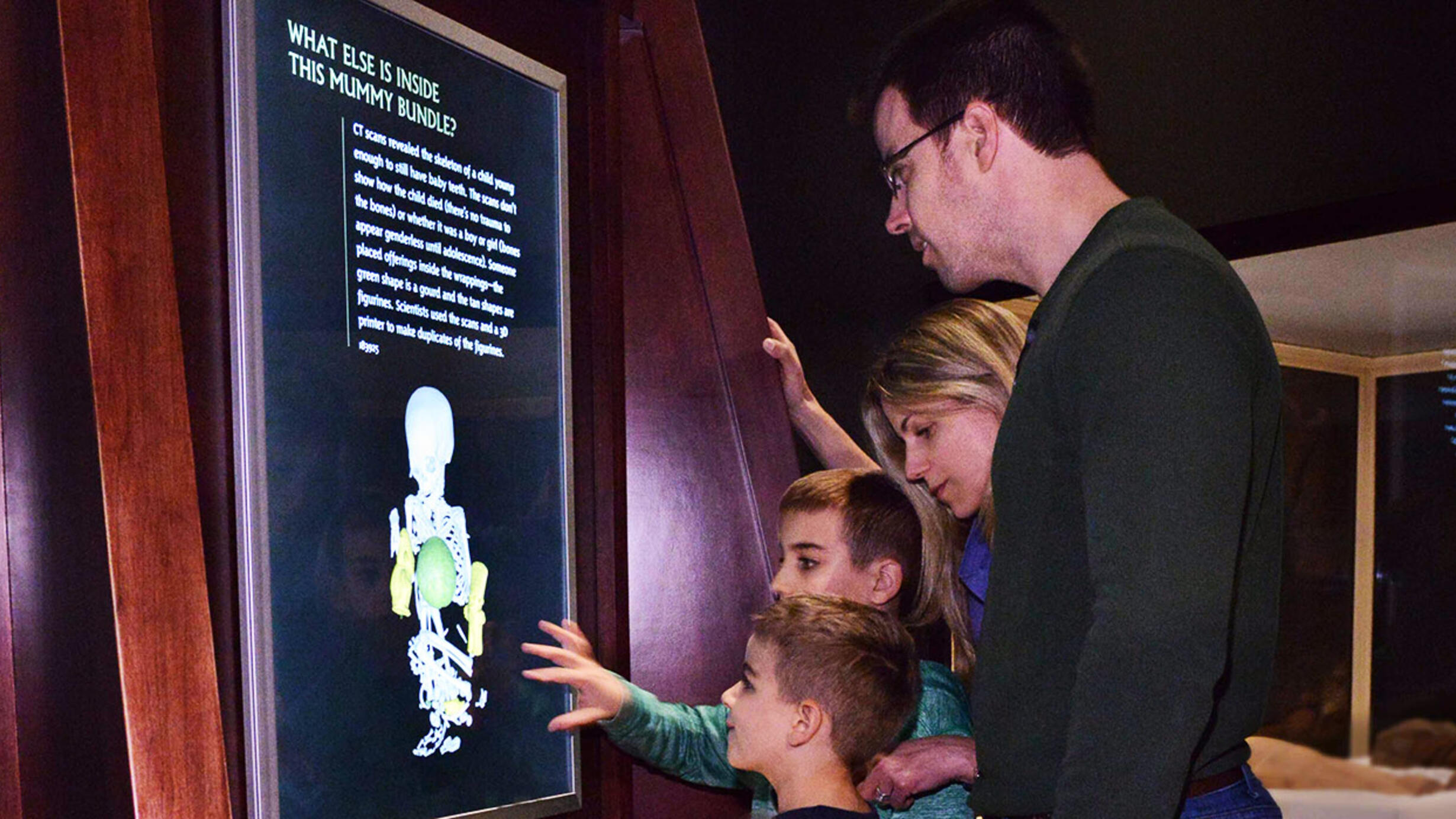Mummies in Peru
Part of the Mummies exhibition.
 Guests to Mummies handle 3D-printed duplicates of figurines that were placed as offerings inside Egyptian and Peruvian mummies.
Guests to Mummies handle 3D-printed duplicates of figurines that were placed as offerings inside Egyptian and Peruvian mummies. ©AMNH/C. Chesek
Mummification was practiced by numerous cultures in what is now Peru, beginning more than 7,000 years ago and allowed the living to remember, and remain connected with, the dead. Some people kept mummies in their homes or brought them to festivals. Others brought offerings of food or drink to their loved ones’ graves.
The Chinchorro people, who lived in what is now Peru and Chile, were the world’s first practitioners of mummification, thousands of years before Egyptians. The Chinchorro painted the mummies they prepared black or red and added a wig. Making a mask would have been one of the last steps of the process. The sculptor covered the dead person’s skull with clay, fashioned a nose, eyes, and mouth, and then left it to dry. The masks rarely survived intact because unbaked clay is fragile—a modern sculptor made the mask below using ancient materials and methods.
© 2015 The Field Museum, A115210d_029D, photographer John Weinstein
Mummies are often entombed with food, figurines, pottery, and other items for use or wear in everyday life. Smaller goods were often placed inside a mummy’s wrappings. Fine ceramics, such as this double-spouted jar with the face of a jaguar made in the Paracas culture (conventionally dated from 800 BC–AD 100), were often buried with the mummified dead. Items like these can help archaeologists understand how ancient Peruvians lived, and what they cared about.
© 2015 The Field Museum, A115203d_002C, photographer John Weinstein
Thousand-year-old vessels for chicha, a beer made from corn, were buried with mummies in the ancient Chancay culture of Peru. The vessels’ figures hold out small cups, as if to offer the dead a drink. The Chancay were known to replenish cups of chicha, dishes of beans and corn, and other foods inside the tombs of their loved ones.
© 2015 The Field Museum, A115208d_018E, photographer John Weinstein
Researchers don’t understand the meaning of all grave goods found with mummies, such as this Nazca vessel portraying a preserved head. Once thought to be war trophies, severed heads among the Nazca (100 BC–AD 800) were ritual objects of unknown purpose. The figure portrayed on the vessel has its mouth sewn shut with cactus spines.
© 2015 The Field Museum, A115205d_016B, photographer John Weinstein
See more of the exhibition—explore Mummies in Egypt.
Photo credit for lead image: © 2015 The Field Museum, A115204d_012C, photographer John Weinstein
Read more about